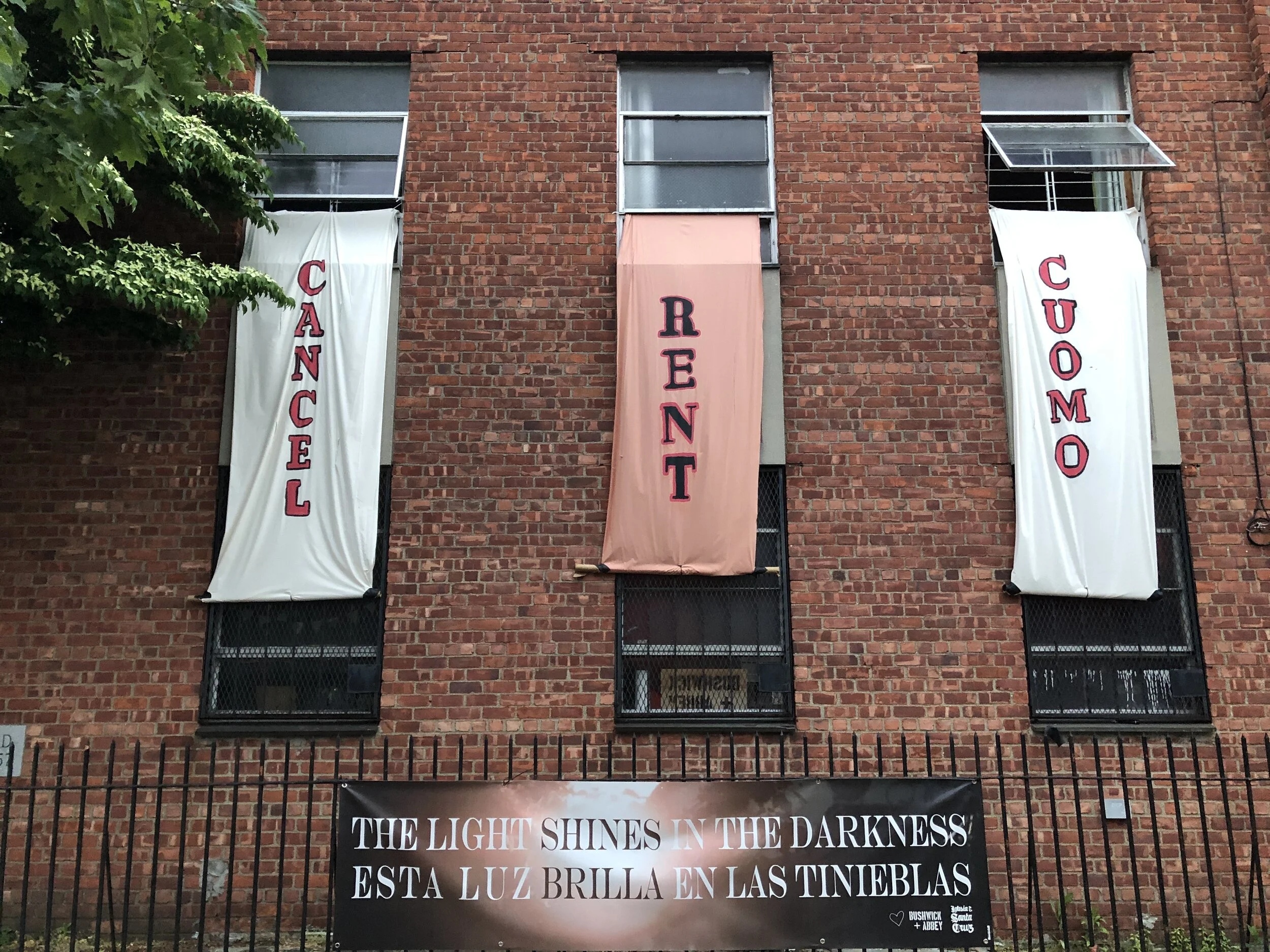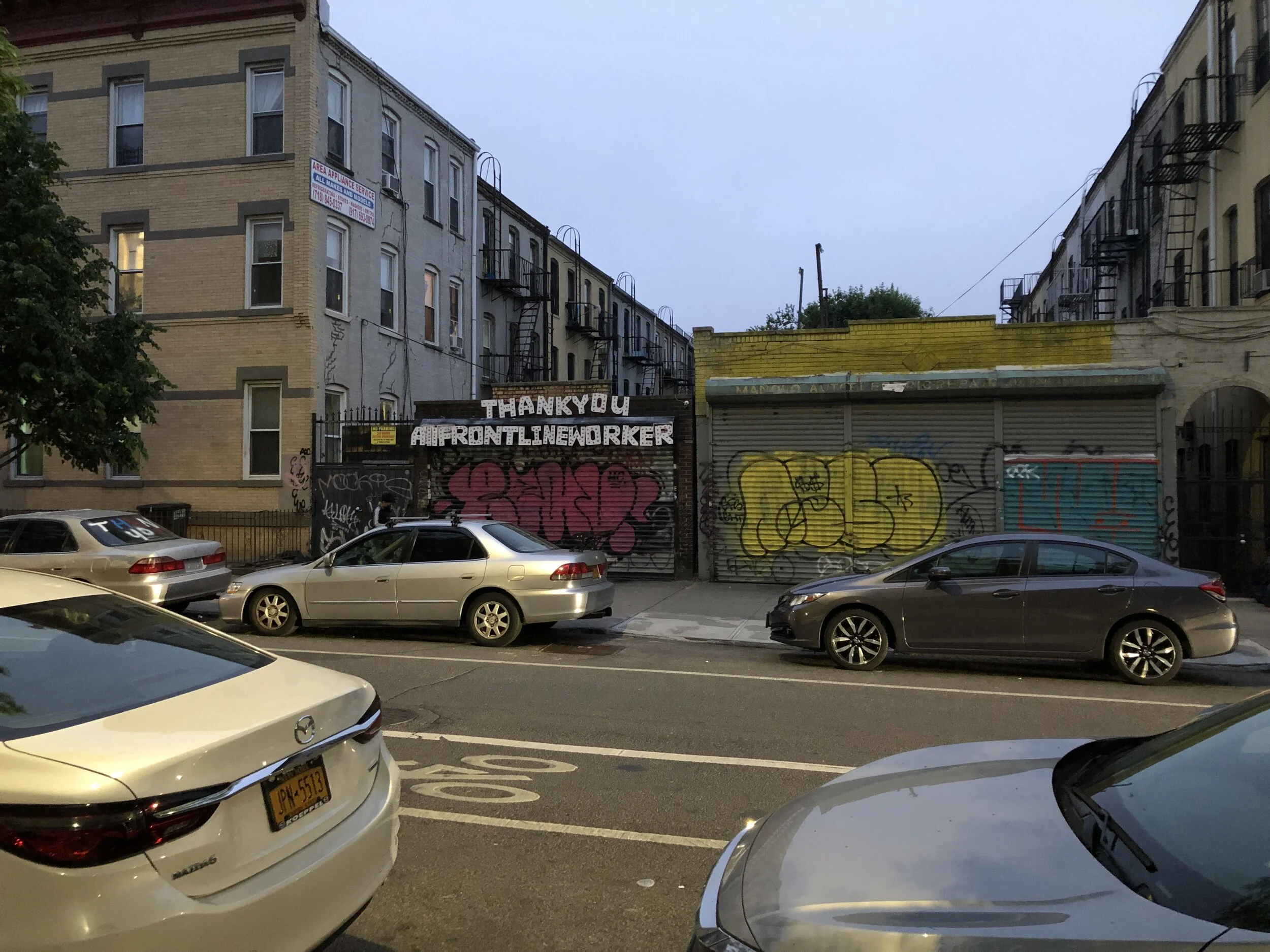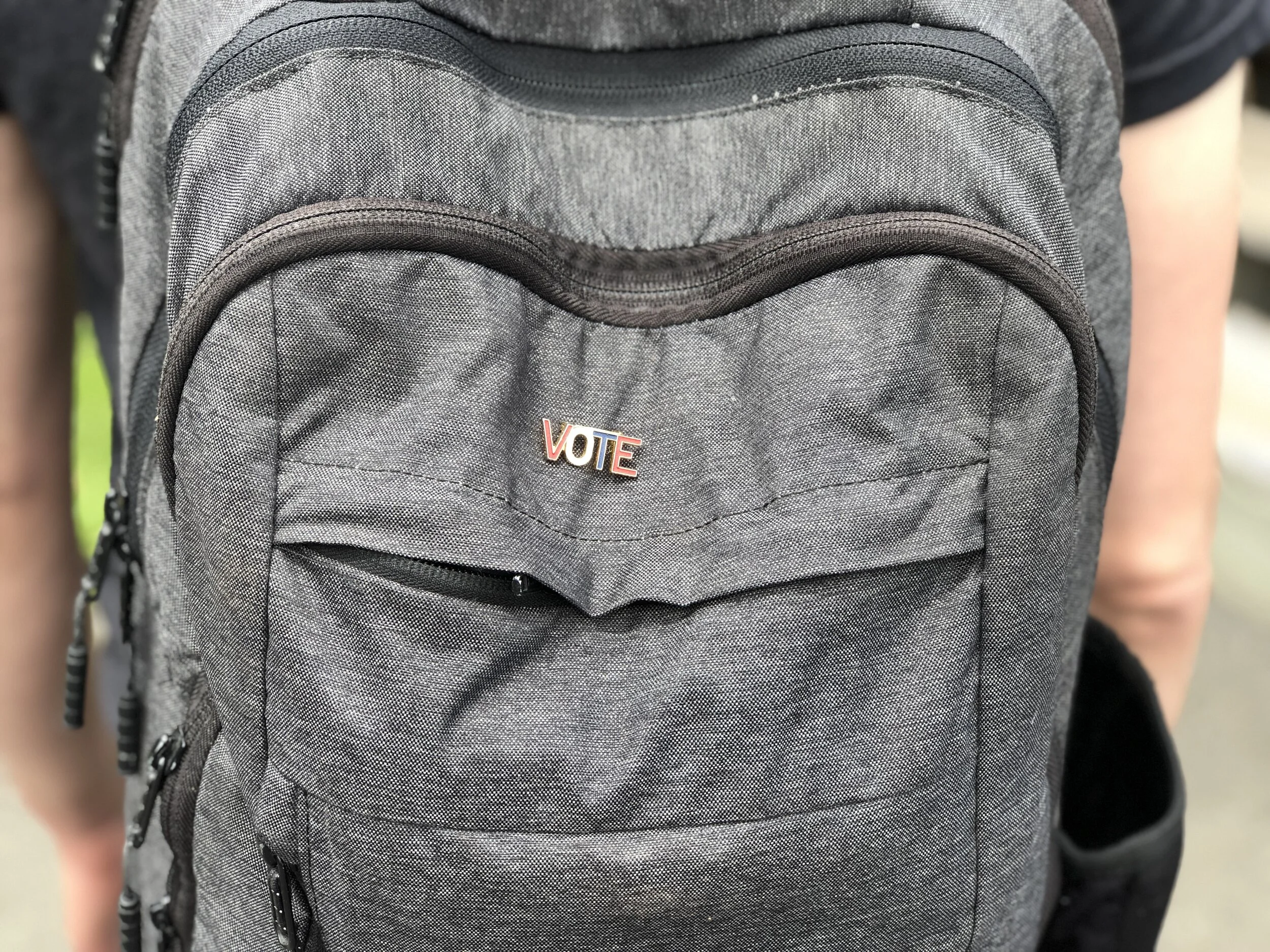How a New York City Council District was Handed an Unelected Leader
How a New York City Council District was Handed an Unelected Leader
COVID played a role. But New York machine politics was the star.
Possibly for the first time in history, a long stretch of Brooklyn may soon be represented at City Hall by someone who did not receive a single primary vote. Darma Diaz is currently running unopposed in the June 23 Democratic primary to fill the open seat in City Council District 37, which includes the neighborhoods of Bushwick, Brownsville, East New York and Cypress Hills, and which has been sitting empty since January. The primary race has been removed from all ballots in the district, owing to the fact that the New York Board of Elections has the power to delete any races from the ballot that are considered “uncontested.” In New York, Democratic primary winners are all but assured a victory in general elections.
So how did Diaz secure this vote-less assumption to the halls of power? Misunderstandings, misinterpretations and manipulation occurred at almost every level of oversight. COVID-19, though central to the story, was almost incidental — since confusion, strong-arm tactics and gotcha games are woven deep into the fabric of New York’s elections.
To be fair, uncontested races do happen in New York, sometimes innocuously. They occur when no one wants to run against the incumbent, or when those who do want to run don’t qualify for the ballot. Candidates who want to qualify for the ballot must reside within the district they’re running in, and must submit a petition to the New York City Board of Elections that contains a minimum number of signatures from registered voters who live in the district. They are required to get these signatures the old-fashioned way — face to face, with a pen and a clipboard — and to submit them by specific deadlines.
After submissions are in, any resident of the district may file objections to any candidate’s petition signatures, calling their validity into question. Usually, though not always, the ones filing these objections are candidates in the race. The Board of Elections then holds a hearing and checks all the names and addresses on the challenged petition. Candidates frequently lose signatures as a result of this process. They may be deemed ineligible to run if the final number of signatures doesn’t hit the minimum set by law.
So yes, this kind of thing happens, and it happened in the race for the 37th City Council seat in Brooklyn. It’s just that there are several things about the process and the result that don’t sit right with voters or with Diaz’s ejected challengers. Nothing Diaz or her supporters did was illegal, and one could even argue that none of their actions were suspicious. But it’s also clear that the state, the city, the party and her campaign could have done much more to make this a competitive race, especially in an underserved area representing roughly 150,000 people in the middle of a horrific economic and health crisis.
In many cities, and on both sides of the aisle, we have seen politicians, parties and local governments work the holes left by emergency COVID planning to sway the direction of federal aid, medical care and elections. Let’s take a dive into exactly how we got to the elimination of this City Council contest, since it is not a predicament isolated to Brooklyn’s District 37 or New York.
-----
Brooklyn’s City Council District 37, which includes parts of Bushwick, Brownsville, East New York and Cypress Hills, has been hit hard by the economic downturn sparked by COVID and exacerbated by other long-standing issues.
On January 26, before COVID-19 was at the front of anyone’s minds in New York, Rafael Espinal resigned from his role as City Council Member for Brooklyn’s District 37. He decided to take on a new job as head of the Freelancers Union. He still had two years left on his term.
Mayor Bill de Blasio set April 28 as the special election date to fill Espinal’s seat, the same day as New York State’s presidential primary. The winner of this nonpartisan special election would hold the seat only through the end of 2020. To decide who would take over the final year of Espinal’s term, from the end of 2020 to the end of 2021, the district would hold a partisan primary election on June 23, followed by a general election on November 3. Whoever won the April special election would be seen as a shoe-in for the June primary and the general win in November. Based on history, they would also probably be a lock for the subsequent term starting in 2022.
Darma Diaz is a social worker and the director of housing services for Overcoming Love Ministries, a faith-based public outreach group serving Brooklyn and Queens. She is also one of two elected Democratic district leaders for the 54th Assembly District, a state constituency that overlaps geographically with Council District 37. As such, she serves on the Brooklyn Democratic Party’s Executive Committee, a 44-member body that has the power to elect the county’s party leader, decide party rules, and to select candidates for special and judicial elections. At the time of Espinal’s resignation, the committee Diaz sits on had just unanimously elected Rodneyse Bichotte as the head of the Brooklyn Democratic Party. On January 28 — a mere two days later — Bichotte announced her endorsement of Diaz to fill Espinal’s council seat in the upcoming election.
In early February, still over a month before the spread of COVID-19 became a subject of life, death and policy in New York, four Brooklynites announced their intention to run against Diaz in both the April special election and the June primary. These challengers included: Sandy Nurse, a Bushwick community organizer and co-founder of the progressive activist center Mayday Space, who had just dropped her bid for State Assembly to run in the district; Misba Abdin, an East New York resident and founder of the nonprofit Bangladeshi American Community Development & Youth Service; Kimberly Council, a law librarian from Cypress Hills and the former president of the East New York Housing Development Corporation; and Rick Echevarria, a Bushwick native who worked for Mayor de Blasio in the city’s Housing Preservation and Development department before, he claims, he was fired for whistleblowing about corruption within the agency.
Diaz was considered the one to beat from the start, by virtue of her heavy backing from the Brooklyn Democratic Party. She began amassing a substantial number of petition signatures soon after canvassing opened on February 25. She also earned the endorsement of Espinal, who had been seen by many as a progressive champion for the district during his six years representing it.
By mid-March, COVID was no longer a distant worry for New Yorkers. Every part of American life was now being poisoned by the coronavirus, while the fatality rate in New York State and City was climbing at a horrific, screaming pace. Governor Cuomo declared a state of emergency in New York State on March 7, and Mayor de Blasio announced a state of emergency in New York City on March 12. The number of people permitted to congregate for non-essential public gatherings dwindled from 500 to 50 to 10 to zero.
In addition to making sweeping last-minute decisions that aimed at supplying New York with ventilators, hospital beds, protective equipment and outdoor morgues, Governor Cuomo also needed to make some urgent calls about how to run the state’s three scheduled elections: the April 28 special elections, the June 23 primaries and the November 3 generals. The New York State Legislature had adjourned its spring session early with no immediate plan to return to lawmaking either in person or remotely. The power to postpone New York’s in-person elections until a safer time, and to permit statewide voting by mail, rested solely with the governor’s authority to issue short-term executive orders.
On March 14, Cuomo issued an order dramatically shortening the period permitted for collecting petition signatures. He said public safety necessitated an immediate end to door-knocking and going up to people on the street to get signatures. Instead of April 2, candidates now had until March 17 at 5 p.m. to hand in their petitions. In consideration of this, Cuomo also lowered the signature minimum candidates had to meet to get on the ballot, ordering that, “pursuant to Section 6-136” of state election law, they would now only have to acquire “30% of the stated threshold” of signatures.
Brooklyn’s City Council District 37 has been unrepresented at City Hall since January.
Here’s where Cuomo’s executive order left the door open for confusion, legal battles and strong-arm tactics: Section 6-136 of New York State election law states that the minimum number of signatures required to run for New York City Council is 900, 30% of which is 270. However, in 2013, the New York City Charter was changed to lower this threshold to 450 signatures. The state law had not been updated to reflect this number. And nowhere in his March 14 order did Cuomo mention deferring to the New York City Charter.
After the order was released, at least four of the candidates running for the council seat were operating on the assumption that they only had to meet 30% of 450, i.e., 135 signatures, not 270.
Diaz had already met the city’s quota of 450 names and claimed to have rocketed past 900. But according to March campaign filing numbers, she lagged behind Abdin and Nurse in donations and public matching funds. Sandy Nurse was now seen as Diaz’s most formidable challenger. In addition to high donor and matching fund totals, Nurse had picked up several powerful endorsements, including those from Rep. Alexandria Ocasio-Cortez, New York City Comptroller Scott Stringer and the Working Families Party, a highly influential left-leaning third party. Abdin, Council and Echevarria struggled to stay in the spotlight, but continued to gather signatures and get out their campaign messages, all while navigating the ever-growing threat of the coronavirus.
By late March, the death toll and economic destruction from the virus was the only story of the day. Most candidates had begun to limit their face-to-face contact with district residents due to safety concerns. Those who’d been trailing Diaz in their number of petition signatures fell further behind.
All of the candidates submitted their petitions to the Board of Elections by the newly established deadline, March 20. On March 23, two volunteers from Diaz’s campaign, Alexandra Alvarado and Ariana Zapata, filed objections with the election board, asserting that none of Diaz’s competitors had gathered enough valid signatures to meet the minimum. Zapata, in addition to working on Diaz’s campaign, is also a County Committee member for the Brooklyn Democratic Party.
On March 28, after much urging from good governance groups and public health officials, Cuomo signed an executive order moving New York’s April 28 presidential primary and special elections to June 23. This meant the primaries for president, Congress, state and local offices would be held on the same day. It also meant that the nonpartisan special election for Council District 37 — the term covering 2020 — would now be held on the same day as the partisan primary election covering the 2021 term. Mayor de Blasio recognized the potential for confusion to voters, and urged the governor to allow the special election winner to serve on the City Council through the end of 2021. The primary could be postponed until the following June for election to the 2022 term, he said, saving time and resources.
The governor did not concede.
With Alvarado and Zapata’s objections filed, staff from the Board of Elections were now obligated to hold an in-person review process of every challenged signature. Signatures could be tossed out if: the signer lives outside the district; the signer is not registered to vote in that district; the signer has written a different address on the petition than the Board of Elections has on file for them (even though the BOE has been shown in federal court to keep inaccurate address records); if the signer’s name is illegible or written in pencil; or if a signer’s entry spills over onto two or more lines.
In a series of open letters, tweets and op-eds, lawmakers and voting rights advocates asked the governor to call a moratorium on petition challenges during the COVID crisis. Two election board staff members had already died from the coronavirus and 15 more had tested positive in the board’s Manhattan office alone. In an open letter to the governor and to Brooklyn party boss Rodneyse Bichotte, a faction of the Democratic Party known as the Brooklyn Young Democrats wrote, “Lives will be lost if we do not end petitioning challenges. We urge you to publicly call for the Board of Elections to value the health and safety of government employees and to limit staff to only those necessary to execute a successful June and November 2020 election.”
Among the letter’s signees were Reps. Jerrold Nadler, Carolyn Maloney, Hakeem Jeffries and Yvette Clark, Public Advocate Jumaane Williams, and dozens of Council members, Assembly members and primary candidates. “While under normal circumstances petition challenges can be used legitimately,” the letter concluded, “any challenges to petitions in light of this lowered threshold seem frivolous.”
In a response op-ed titled “Democracy Doesn’t Stop for Coronavirus,” Bichotte replied, “These candidates [Diaz’s challengers] should not be taking advantage of our current health emergency to perpetrate fraud and coerce their candidacy on the voting community.”
On April 9, Governor Cuomo issued an order allowing all New Yorkers to apply for absentee ballots for the June primary, in the hope of reducing the spread of the coronavirus at polling places.
But the Board of Elections stayed open throughout April and continued to review petition challenges. On April 22, following a hearing, the board sided with Diaz’s campaign volunteers and ruled that Nurse, Council, Abdin and Echevarria, who in the final count had collected between 147 and 218 signatures each, did not meet the minimum requirements to make the ballot. The four argued that they had met the emergency minimum dictated by the governor’s executive order of March 14, which they asserted was 135 names. Board officials dismissed these claims. They countered that the minimum for New York City is 450 signatures — period. The governor’s 30% order did not apply.
The board immediately removed Nurse, Council, Abdin and Echevarria from the primary ballot, leaving only Diaz by default. Though still eligible for the special election, Diaz’s opponents called on Mayor de Blasio to come out in support of their case and lobby the governor to reinstate them in the primary. The mayor did not weigh in. Susan Lerner, head of the voting rights nonprofit Common Cause New York, told Gothamist, “These sort of petty political games that are a bonanza for election lawyers absolutely should not be indulged in in this time of crisis.”
Three days later, on April 25, the governor issued a late-night executive order canceling the special election to fill Espinal’s seat. He said asking voters to vote in a special election and a primary election for the same office on the same day would be too confusing. Nurse issued a statement lambasting the decision. “This is by far the most blatant anti-democratic power grab,” she said. “Unless Mayor de Blasio steps in to enforce the City Charter and the court agrees, there will only be one candidate left on the ballot. That is not democracy.”
Canceling the special election also had the effect of leaving the council district without an elected representative for practically a year, and the people of the majority Black and Hispanic district without a voice in budgeting or lawmaking during a period of acute crisis.
Diaz supported the governor’s cancellation of the special election, stating that it could save lives by reducing the number of ballots voters would need to mail. “If we can wait till January 1 and save one life,” she said, “I want to save one life.”
The four candidates who’d been kicked off the ballot filed appeals with the state’s Supreme Court in Brooklyn. On April 29, Justice Edgar G. Walker overturned the Board of Elections’ decision, calling it an “absurd interpretation” of the governor’s executive order. He said the candidates were only under burden to meet 30% of the city’s 450-signature minimum, or 135. He went on to conclude that expecting candidates to fulfill the whole 450-signature quota during a pandemic was unreasonable.
Walker ordered Abdin and Council back on the ballot. However, Nurse was not so lucky. The judge dismissed her claim because she’d gone against policy by delivering her legal paperwork by overnight mail, rather than in person. Echevarria was also disqualified over a paperwork error. Neither pushed for reinstatement.
It now appeared the race was back on in the primary, even if the special election was canceled. It was to be Diaz v. Council v. Abdin.
Voting in New York’s primaries closes on June 23 — but the race for City Council District 37 was quietly removed from the ballot by the city’s Board of Elections. (Photo by Sarah St.Vincent)




